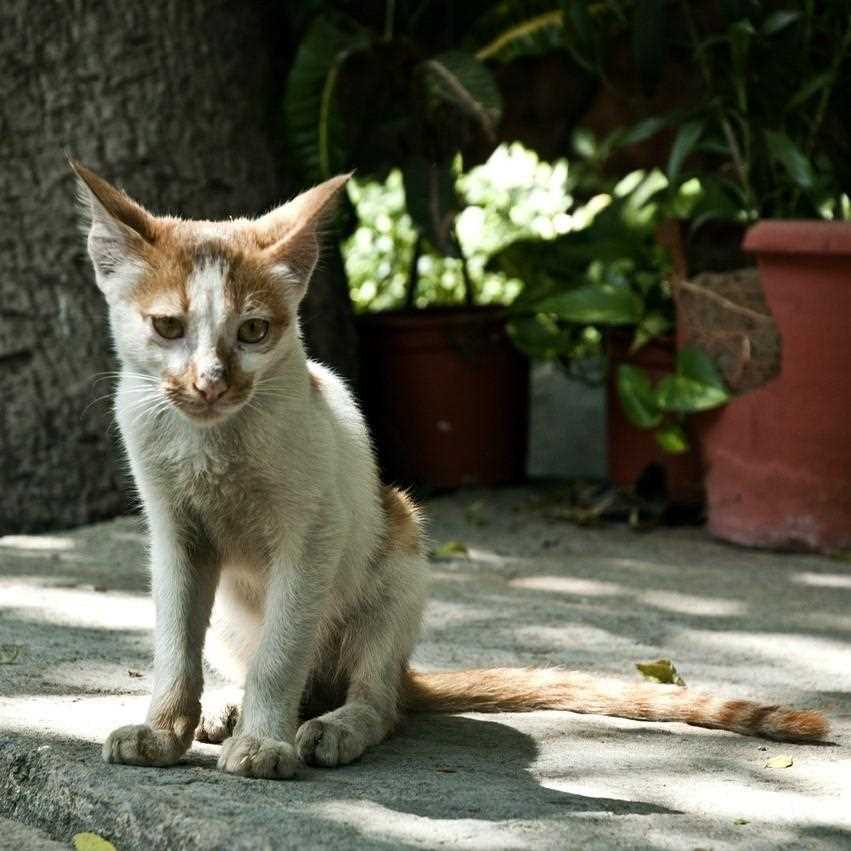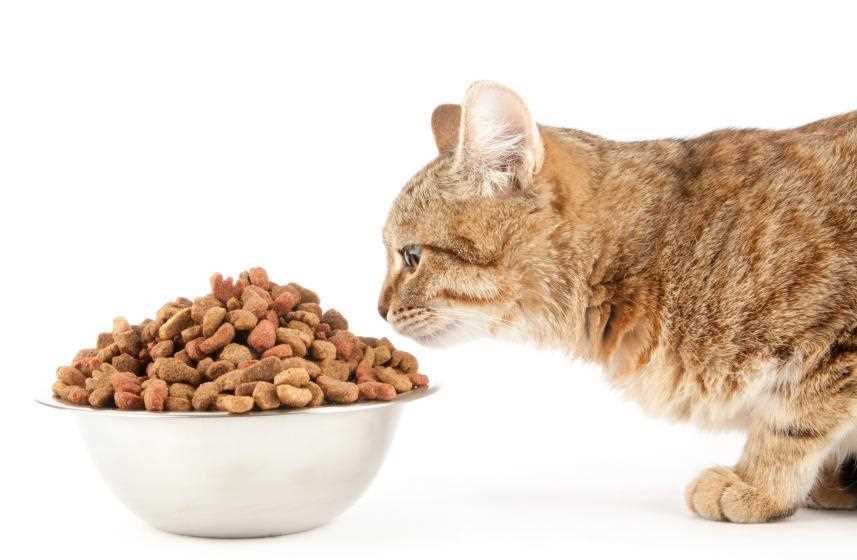



Start with high-quality wet food that contains real meat as the first ingredient. Look for options that provide a balance of protein and fat, as these will help in building muscle mass and gaining weight. Brands with added vitamins and minerals are a plus, ensuring that nutritional needs are met.
Incorporate small, frequent meals throughout the day. This approach can encourage a hesitant eater to consume more calories without feeling overwhelmed. Consider using food puzzles or interactive feeders to make mealtime engaging and stimulate appetite.
Adding nutritional supplements, such as omega-3 fatty acids and probiotics, can significantly enhance overall health. These can be found in oil form or as powders that can be mixed with food. Always consult with a veterinarian before introducing new supplements to ensure they are appropriate.
Warm the food slightly to enhance its aroma. Cats are often more attracted to food that smells appetizing, and heating it can make it more appealing. Just be careful not to overheat it.
Finally, monitor the weight and health of your furry friend regularly. Keeping track of weight gain and adjusting the diet as necessary is key to achieving and maintaining a healthy weight. Regular vet check-ups will provide additional guidance tailored to your unique companion’s needs.
Suggestions for a Starving Feline
Start with high-quality, wet food packed with protein. Look for options with real meat as the first ingredient. Brands like Wellness or Blue Buffalo are good choices.
Introduce small portions gradually; this helps avoid overwhelming the digestive system. Monitor reactions to new food; any signs of distress may indicate an intolerance.
Mix in some warm water or broth to make the food more appealing and easier to consume. This adds flavor and hydration, which is crucial for overall recovery.
Consider adding nutritional supplements specifically designed for underweight pets. These can provide essential vitamins and minerals needed for rebuilding strength.
Frequent, small meals throughout the day can encourage eating and help with weight gain. Aim for four to six meals instead of the usual two.
Ensure fresh, clean water is always available. Hydration is just as important as nutrition in regaining health.
Be patient and monitor progress closely. If there’s no improvement or if health issues arise, consult a veterinarian for tailored guidance.
Identifying Nutritional Deficiencies in Your Feline Friend

Observe the coat. A dull, brittle appearance often signals a lack of essential fatty acids or protein. Regular grooming can help, but if the shine is missing, it’s time to investigate further.
Monitor weight changes closely. Sudden fluctuations indicate potential nutritional issues. A significant loss or gain might require a vet’s assessment to pinpoint the underlying cause.
Assess energy levels. Lethargy or excessive sleeping can suggest inadequate caloric intake or imbalanced nutrients. An active companion should have a spirited demeanor; any deviation warrants attention.
Check for gastrointestinal signs. Vomiting, diarrhea, or constipation may point to dietary deficiencies or intolerances. Keep track of bowel movements to identify any irregularities.
Watch for behavioral changes. Increased irritability or withdrawal might stem from discomfort due to nutritional imbalances. A happy feline typically shows curiosity and engagement.
Evaluate oral health. Bad breath or bleeding gums can indicate a need for better nutrition. A balanced diet supports dental hygiene, so ensure the right foods are offered.
Consult a veterinarian for a thorough examination. Blood tests can provide insight into specific deficiencies, guiding adjustments to the diet. Professional advice helps in creating a tailored nutrition plan.
Choosing the Right Food for Recovery

I recommend focusing on high-quality, protein-rich meals. Look for options that list real meat as the first ingredient. Chicken, turkey, or fish are excellent choices that aid in rebuilding strength.
Incorporating wet food is beneficial due to its higher moisture content, which helps with hydration. It’s easier to digest and often more appealing. Canned options with a high meat percentage are preferable.
Consider specialized formulas designed for recovery. These often contain added vitamins and minerals, which can address specific health needs. Products labeled as “vet-approved” or “prescription” may provide additional support. Consult your veterinarian for tailored recommendations.
For a balanced approach, pair meals with best puzzle toys for cats to stimulate mental engagement and encourage activity. This combination can further enhance recovery and overall well-being.
Be cautious with sudden diet changes; introduce new food gradually to avoid gastrointestinal upset. Monitoring your furry friend’s response is key. If any adverse reactions occur, revert to the previous diet and consult a professional.
Incorporating Supplements into Your Cat’s Diet
To enhance my nutrition, I recommend adding high-quality supplements tailored for felines. Omega-3 fatty acids, such as fish oil, support skin and coat health while providing anti-inflammatory benefits. I personally enjoy salmon oil, which not only tastes great but also promotes overall wellness.
Probiotics are another excellent addition. They aid digestion and help maintain a balanced gut flora. A daily dose can improve nutrient absorption, which is vital for recovery. Be sure to choose a product specifically formulated for us, as human probiotics may not be suitable.
Amino acids like taurine are essential for heart and eye health. Look for supplements that offer this crucial nutrient, especially if my regular meals lack it. It’s a simple way to ensure I’m getting everything I need.
Additionally, consider incorporating a multivitamin designed for felines. These can fill in any dietary gaps, providing essential vitamins and minerals. Always consult with a veterinarian before starting any new supplement regimen to ensure it meets my specific needs.
Lastly, remember to monitor my response to any new additions. If I seem more energetic or my coat shines brighter, you know you’re on the right track. For those looking to optimize household chores, check out the best economy usage washing machine for effective cleaning solutions while keeping my space tidy.
Establishing a Feeding Schedule for a Malnourished Cat
Creating a structured timetable for meals is crucial for restoring health. I recommend dividing daily food portions into several smaller servings. Start with four to six meals spaced evenly throughout the day. This approach helps prevent overwhelming the digestive system and encourages gradual weight gain.
Timing and Frequency

Feed at consistent times daily. For instance, if the first meal is at 8 AM, subsequent feedings can occur at noon, 4 PM, and 8 PM. Keep the intervals around four hours apart. Adjust the schedule based on activity levels and appetite. If I’m hungrier, I may signal for an earlier meal, so it’s important to be attentive.
Monitoring Intake
Track how much food I consume during each feeding. This will help determine whether adjustments are needed, such as increasing food quantity or frequency. If I consistently leave food behind, consider decreasing the portion size. Regularly assess my weight and overall condition to ensure progress is on track.
Lastly, maintain a calm and quiet environment during meal times. This encourages eating and reduces stress. A routine fosters a sense of security, contributing positively to recovery.
Monitoring Weight Gain and Health Improvements

Tracking my weight and overall health is key to ensuring I’m on the right path. Regular weigh-ins every week help assess progress. A consistent scale is best for accurate readings. I recommend keeping a log of results to visualize changes over time.
During recovery, I focus on specific signs of improvement. Increased energy levels and playful behavior indicate positive changes. Observing my coat condition is essential; a shiny, smooth coat reflects better nutrition. Changes in appetite also signal health advancements.
| Week | Weight (lbs) | Energy Level | Coat Condition | Appetite |
|---|---|---|---|---|
| 1 | 6.5 | Low | Dull | Picky |
| 2 | 7.0 | Moderate | Improving | Better |
| 3 | 7.5 | Active | Shiny | Hungry |
Monitoring hydration is equally vital. Fresh water should always be available. Increased thirst or changes in urination patterns may indicate health issues. Regular vet visits are also recommended to ensure everything is on track.
Incorporating these practices into daily routines fosters a supportive environment for recovery. My human plays a significant role in observing these aspects, making adjustments to my diet or habits as needed. Keeping a close eye on my health helps both of us feel secure and motivated during this crucial phase.
Consulting a Veterinarian for Tailored Advice
Seeking the expertise of a veterinarian is a smart move for any companion in need of nutritional guidance. A professional can assess specific health statuses and suggest personalized feeding plans.
Here are key points to consider during your consultation:
- Health Evaluation: The vet will perform a thorough examination to identify any underlying health issues, which could influence dietary needs.
- Customized Diet Plan: Expect a tailored feeding strategy that addresses nutritional gaps, incorporating specific ingredients and food types suited to your furry friend.
- Monitoring Progress: Regular follow-ups will help track changes in weight and overall health, allowing for adjustments to the diet as needed.
- Addressing Special Needs: If there are any allergies or sensitivities, your vet can recommend suitable options that won’t cause discomfort.
- Supplement Advice: Ask about any additional nutrients that could enhance well-being, like vitamins or minerals that support recovery.
Utilizing veterinary advice ensures a safe and effective approach to improving the condition of a pet. Don’t hesitate to reach out for professional insights tailored to your companion’s unique needs.











